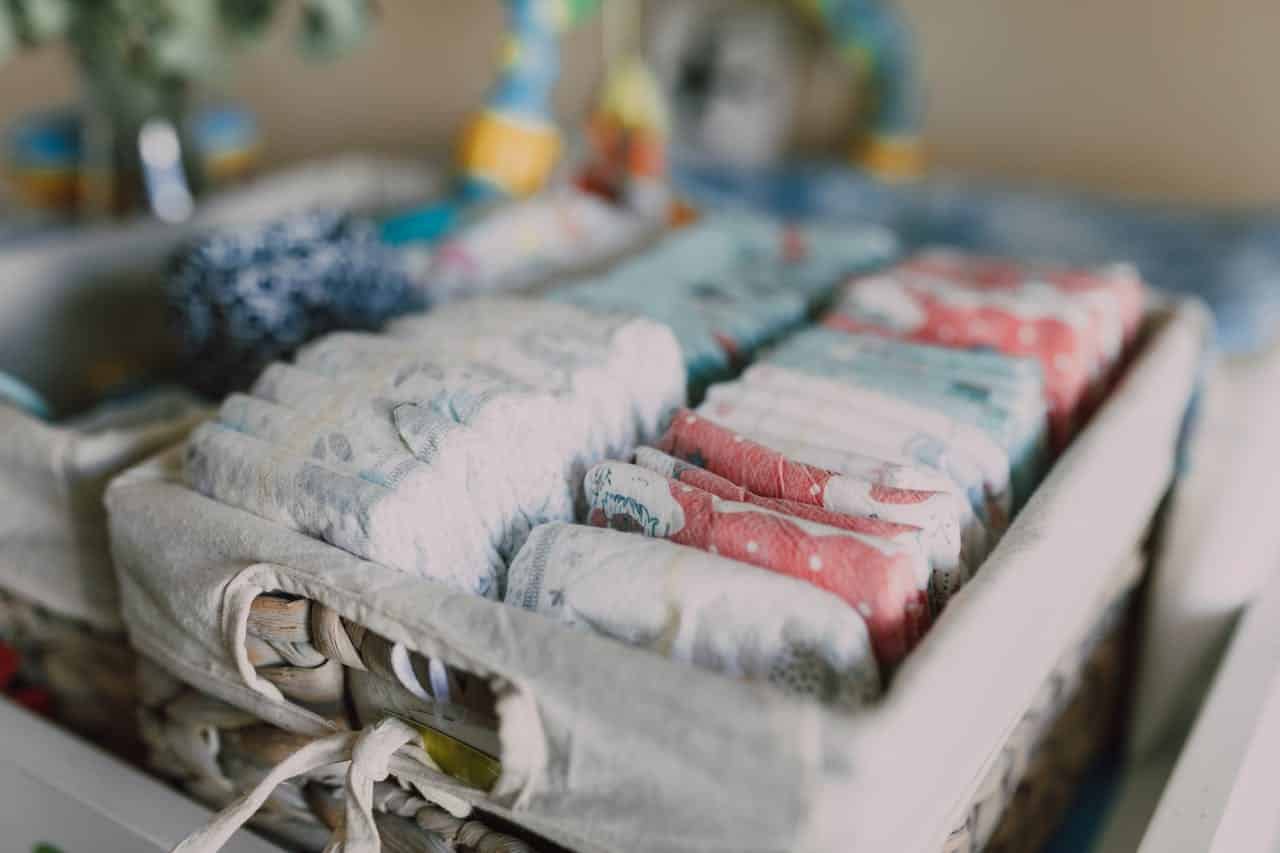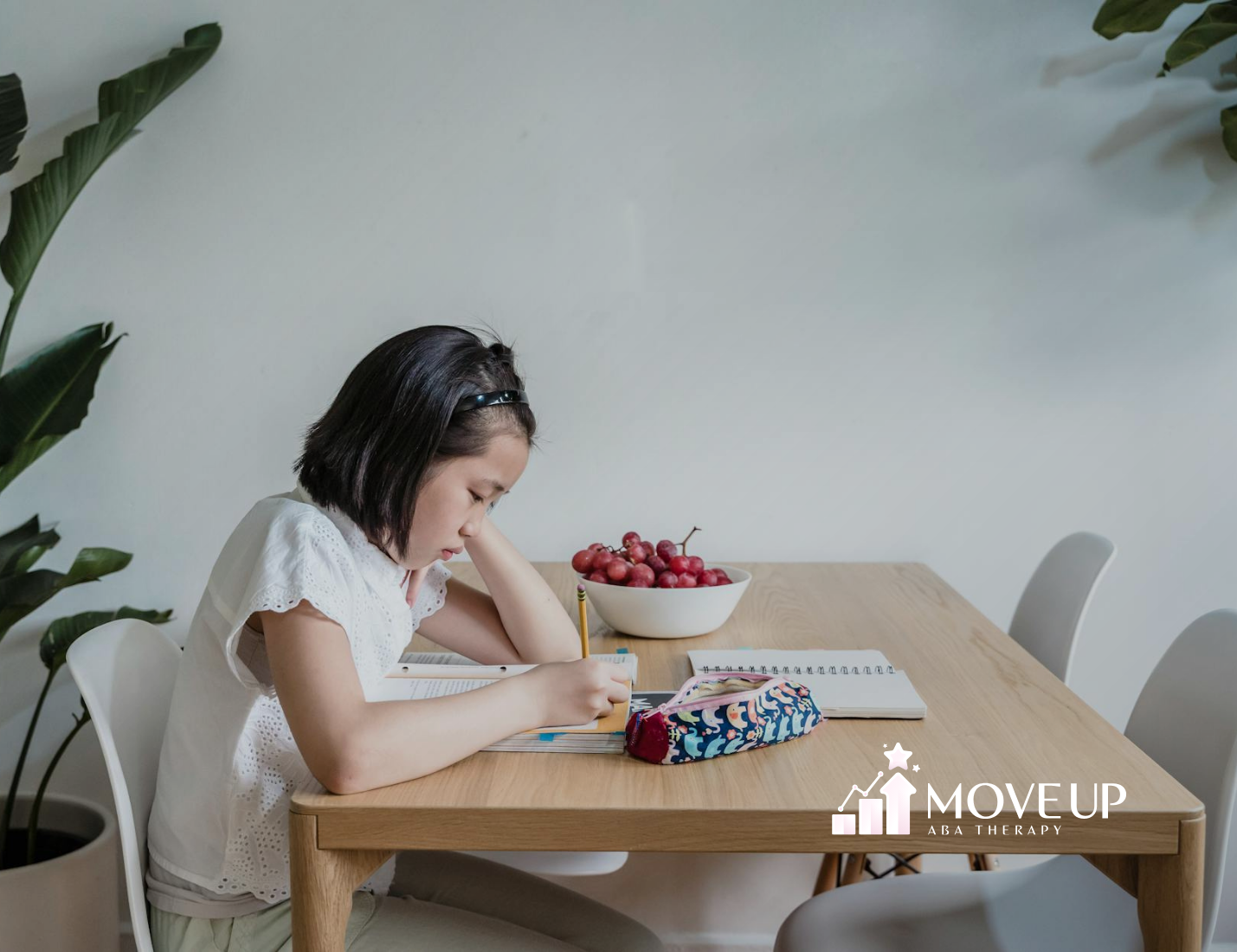As parents, we understand that potty training is one of the major milestones in early childhood development. For families of children with autism spectrum disorder, this critical life skill might require a different approach than what works for typically developing children. That’s where ABA therapy and potty training techniques come together to create a supportive, effective learning experience.
Understanding ABA Therapy and Potty Training
Applied behavior analysis (ABA therapy) has proven to be extremely effective in teaching various skills to children with autism, including toilet training. This systematic approach breaks down complex tasks into manageable steps while using positive reinforcement to encourage progress. Let’s explore how this scientifically-backed method can help your child succeed in their potty training journey.
Success Stories
“Move Up ABA has been a lifeline for our family. Before starting therapy, our son struggled with daily routines and communication. Now, he’s more independent and even initiated a conversation with a classmate for the first time! The progress we’ve seen in just six months is truly remarkable.”
- Emily R., Silver Spring, Accountant
“As a single dad, I was overwhelmed trying to manage my child’s behavior. The Move Up ABA team not only provided amazing support for my little girl but also taught me practical strategies to use at home. Their in-home sessions fit perfectly with our busy schedule. I’m so grateful for their patience and expertise.”
- Michael T., Rockville, Middle School Teacher
“We were hesitant about starting ABA therapy, but Move Up ABA’s approach put us at ease from day one. Our twins have made incredible strides in their social skills and self-regulation. The therapists are like extended family now, and we couldn’t be happier with our decision to work with them.”
- Aisha and James L., Simpson, Police Officers
Recognizing Your Child’s Readiness
Before diving into a toilet training program, it’s crucial to understand the signs that indicate your child is ready for this new challenge. Look for these key indicators:
Staying dry for longer periods
When your child can stay dry for 2-3 hours during the day, it shows developing bladder control – a key indicator for potty training readiness. This sign of bladder control often appears alongside your child showing discomfort with wet or soiled diapers.
Showing interest in the bathroom

Your child might follow family members to the bathroom or show curiosity about the toilet and potty chair.
This natural interest creates perfect teaching moments for introducing toilet training concepts.
Having predictable times for bowel movements
Your child has bowel movements at consistent times each day, making it easier to plan bathroom visits. Regular bowel movements indicate that their body has developed a natural rhythm, which is crucial for successful potty training.
Demonstrating basic bladder control
Your child begins showing clear signs when they need to urinate, such as dancing, holding themselves, or finding a private spot. These physical cues demonstrate their growing awareness of bodily signals, which is essential for successful toilet training.
Following simple instructions
Your child can understand and follow basic bathroom-related commands, showing readiness for the toilet training process. This skill is particularly important as potty training involves multiple steps and following directions.
Creating the Right Approach to Toilet Training
Once you’ve identified signs of readiness, a personalized strategy becomes essential. Here’s what our trained BCBAs consider:
Your child’s current skills
A trained BCBA will assess your child’s existing abilities to create a realistic and achievable toilet training program. This evaluation helps determine the best approach for teaching this critical life skill while considering your child’s individual characteristics.
Limited motor skills considerations
Some children with autism may need additional support with physical aspects of using the bathroom, such as getting on the potty chair or managing clothing. Understanding these needs helps us develop appropriate strategies and modifications for successful toilet training.
Communication abilities
Your child’s method of expressing needs, whether through words, signs, or other means, shapes how we approach the toilet training program.
So, you need to assess your child’s communication skills and how you relay the information. Clear communication methods are essential for success, as your child needs effective ways to indicate their bathroom needs.
Sensory sensitivities
Children on the autism spectrum often have unique responses to bathroom-related sensory experiences, from different toilet seats to flushing sounds. Understanding these sensitivities allows us to create a comfortable environment that supports positive toileting experiences.
Other programming needs
Your child’s toilet training program should integrate seamlessly with their existing ABA therapy and daily routines. This coordination ensures consistent support across all environments while maintaining progress in other important skill areas.
Setting Up for Success
With a clear strategy in place, gathering the right tools becomes essential:
A comfortable potty chair
Select a potty chair that matches your child’s size and comfort needs, considering any sensory preferences they may have. The right equipment significantly impacts your child’s willingness to engage in toilet training activities.
Data sheet for collection
Maintain detailed records of your child’s successes and challenges during the toilet training process using a comprehensive data collection system. This information helps identify patterns and adjust strategies for optimal progress.
Positive reinforcement items
Choose rewards that specifically motivate your child and reserve them exclusively for toilet training achievements. These special reinforcers should be highly preferred items or activities that maintain your child’s enthusiasm throughout the training process.
Extra clothes and dry pants
Keep multiple changes of comfortable, easy-to-remove clothing readily available for practice sessions and unexpected accidents. Choose clothing that promotes independence, such as pants with elastic waistbands or other adaptive features.
A timer for time intervals
Establish consistent bathroom schedules using a timer to create predictable routines throughout the day. Regular timing helps build habits while allowing you to track progress between successful bathroom visits.
Implementing Effective Toilet Training Techniques
Now that you’re prepared, let’s explore several toilet training techniques that have shown remarkable success when working with children on the autism spectrum. These methods can be adapted to suit your child’s individual needs and preferences.
Scheduled Sitting
Building on our preparation, we’ll start with establishing consistent routines. Have your child sits on the toilet at regular intervals throughout the day. Start with short periods and gradually increase as they tolerate sitting longer.
Teaching Basic Steps
To make the process less overwhelming, we’ll break down the routine into manageable tasks:
Walking to the bathroom
Pulling down pants/underwear
Sitting on the toilet
Remaining seated for the designated time
Proper wiping
Pulling up pants/underwear
Washing hands
Using Positive Reinforcement
As your child masters each step, encouragement becomes crucial. Verbal praise and rewards work wonders for:
Successful urination or bowel movement
Following the routine
Staying dry between bathroom visits
Communicating bathroom needs
Diarrhea and deficits in social awareness are significantly associated with toileting resistance in children with ASD and DD
Source: PubMed
Managing Accidents with Patience
Despite our best efforts, setbacks are a natural part of the learning process. Instead of viewing accidents as failures, let’s use them as valuable learning opportunities:
Stay calm during accidents
When accidents happen, maintaining a composed demeanor helps your child feel secure in their toilet training journey. Remember that accidents are teaching opportunities that help us understand the underlying cause when we potty train children.
You can use these moments as teaching tools. Each accident provides valuable data to help collect information about your child’s toileting procedure and patterns. These moments can help refine your child’s individual toilet training techniques and improve their overall success rate.
Maintain a consistent routine
Even when accidents occur, following predictable times for bathroom visits helps establish a reliable toileting routine. Consistency in your approach, combined with positive reinforcement and verbal praise, supports your child’s confidence in the training process.
Track patterns to improve strategies
Using a data sheet to document when and where accidents happen helps identify patterns in your child’s behavior analysis. This information is extremely effective in adjusting time intervals between bathroom visits and understanding your child’s readiness signals.
Continue encouraging dry pants

After an accident, help your child change into clean, dry clothes while maintaining a supportive atmosphere. Use these transitions as opportunities to teach proper hygiene and self-care skills.
Focus on progress, not perfection. Remember that toilet train children with autism may take time to master bladder control and bowel training. Each child’s progress follows their own timeline, and success is measured in small victories rather than less than a day results.
Data Collection and Progress Monitoring
To ensure we’re on the right track, keeping detailed records is essential. This information will help us adjust and improve our approach:
Collect data on successful attempts
Track accidents
Note time intervals between bathroom visits
Document the underlying cause of any setbacks
Transitioning from Diapers to Underwear
As your child shows progress, we can begin the exciting transition to underwear. This milestone requires thoughtful planning:
Choose the right time to switch
Consider using training underwear
Pack extra clothes for outings
Maintain consistency in your approach
Building Social Skills Through Bathroom Routines
The toileting acquisition process offers valuable opportunities beyond just bathroom independence. During this journey, your child can develop:
Communication skills
Independence
Following multi-step instructions
Understanding social expectations
Supporting Parents Through the Journey
Remember that toilet train children with autism may take longer than less than a day, and that’s perfectly normal. Together, we’ll focus on:
Celebrating small victories
Being patient with the process
Following your child’s progress
Adjusting strategies as needed
Tips for Maintaining Consistency
Success comes from creating habits that stick. Let’s establish a predictable routine by:
Using visual schedules
Setting regular bathroom times
Maintaining the same process at home and school
Communicating with all caregivers
Addressing Common Challenges
As we progress, you might encounter some typical hurdles. Let’s address them together:
Fear of the bathroom
Resistance to sit on the toilet
Preference for diapers
Irregular bowel movements
Working with Professionals
Professional support can make all the difference in your journey. A dedicated ABA therapy team can:
Assess your child’s readiness
Create customized strategies
Monitor progress
Adjust techniques as needed
Celebrating Success
Every step forward deserves recognition. As we progress, we’ll:
Acknowledge each achievement
Use consistent positive reinforcement
Share progress with family members
Document achievements
How Move Up ABA Can Support Your Journey
At Move Up ABA, we understand that potty training can feel overwhelming. Our comprehensive support system includes:
Personalized Assessment: Our trained BCBAs conduct thorough evaluations to understand your child’s specific needs and challenges.
Custom Strategy Development: We create individualized toilet training programs that align with your child’s learning style and family routine.
Ongoing Support: Our team provides regular guidance, adjusting strategies as your child progresses.

Parent Training: We empower you with the tools and knowledge to continue success at home.
Progress Tracking: Detailed data collection helps us optimize your child’s learning journey.
Collaborative Approach: We work closely with families to ensure consistent implementation across all environments.
When to Consider ABA Therapy and Potty Training Support
If you’re finding toilet training challenging, you’re not alone. Our experienced team at Move Up ABA specializes in making this journey smoother for families throughout Maryland. Our proven ABA therapy and potty training techniques have helped numerous children achieve this important milestone.
Ready to take the next step? Contact Move Up ABA today to schedule a consultation. Our caring team will listen to your concerns, answer your questions, and help create a personalized plan that works for your family. Together, we can make toilet training a positive and successful experience for your child.
400 E Pratt St, Floor 8 Baltimore , Maryland 21202, United States
Questions?
Email Us: intake@moveupaba.com
Call Us: (410) 469-1090






